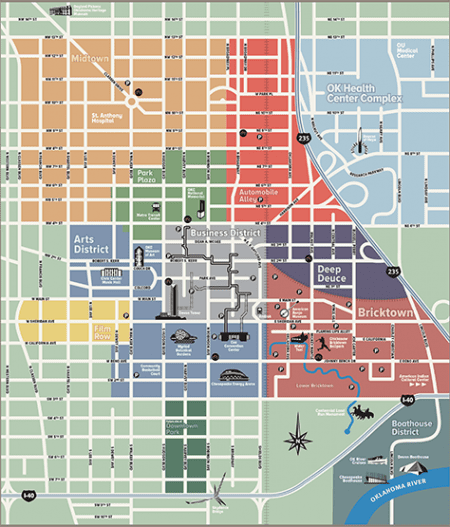A Good Problem To Have
Tulsa also is grappling with the challenge of increased residency in its urban center.
“Trying to redevelop downtown has been multi-faceted,” says Clay Bird, Tulsa Mayor’s Office of Economic Development director.
“We’ve had to create the environment that made people want to live downtown, and we had to have enough people downtown to justify the private investment that would be going into projects. The public improvements certainly attracted more people downtown, which made restaurants and entertainment more desirable investments. By having more daytime and evening entertainment venues, the area became more desirable for people to live.”
Sometimes, growth needs an extra push to really take off.
“As is common in many revitalizing cities, infrastructure tends to lag behind demand unless a community invests in itself to stimulate demand,” says Delise Tomlinson, executive director of downtown development with the Tulsa Regional Chamber.
“The BOK Center is a great example. Another is the Downtown Housing Fund, which incentivized projects like the Philtower Lofts, Mayo Hotel Lofts, Mayo 420, Vandever Lofts, YMCA Lofts and more. Our planners and city fathers should be credited with anticipating the growing desire among young professionals and empty nesters to live in our urban core.”
Despite any perceived lags in infrastructure development, Tomlinson, like her colleagues, says that any of the challenges that accompany downtown development are a drop in the bucket compared to the benefits.
“Even without a grocery store (until Folks Urban Market & Pantry opened in January in the Brady Arts District), we still had and have waiting lists for downtown housing,” Tomlinson says.
“However,” Tomlinson continues, “juggling the parking needs of downtown workers and visitors with those of residents will become a growing challenge until public transportation options increase and more structured parking is available.”
Parking management is sure to become more complicated as downtown residential growth continues.
“And, we’ll need more public spaces and parks,” Tomlinson says. “People like to congregate and relax…The lack (or perceived lack) of conveniently located parking is one of the bigger dilemmas of urban redevelopment. Structured parking is the best solution but a costly one that usually requires public funding and/or incentives.”
While cultural and economic development continues to expand and redefine downtown OKC and Tulsa, the perks are not without their accompanying headaches. But as the popular idiom goes, “Rome wasn’t built in a day.” Oklahoma’s new urban centers will take years to complete, and they will face plenty of hiccups along the way. But with eyes fixed on the promising future of their downtowns, planning officials are prepared to tackle any accompanying problems.
“I wouldn’t say ‘problems,’” Kirkpatrick says, “but as we continue to diversify (from work week office crowds to permanent residential), the land uses [in] downtown are certainly starting to see new challenges and opportunities.”
























